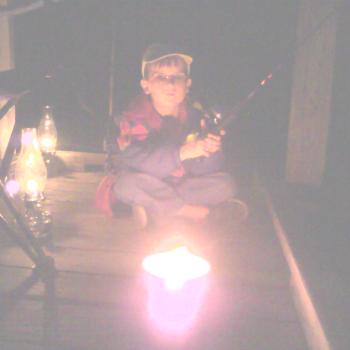What’s the Goldilocks zone for sermons? Is there a sermon length that is not too long, not too short, but just right?

Your sermons might be too long, if…
- Your congregants start nodding off while you’re preaching.
- People leave as soon as you give the invitation when everyone else is standing to sing.
- The guy in the back waves his arm and taps repeatedly on his watch.
- You enter the sanctuary to find that someone has taken it upon themselves to install a clock on the wall just above the narthex door.
- Your audience sits with their mouths open, and eyes glazed over.
- You find yourself getting bored with your own preaching.
The Goldilocks Zone for Sermons
All of these have happened to me. No pastor wants to be accused of preaching sermons that are too long. On the other hand, if your messages are too short, your parishioners might think you aren’t doing your job. Plus, if they’re too short you might not get your point across. What’s the best way to find the Goldilocks zone for sermons? There are at least three factors:
-
Denominational Norms
As a general rule, liturgical churches expect short homilies. Contemporary churches tend toward longer sermons. Traditional churches fall somewhere in the middle. (Click here to read about these three types of churches.) Finding the Goldilocks zone isn’t about knowing the objectively correct sermon length. It’s about discovering what works best for your particular audience. The length of your worship service may vary, depending on the denomination or region. If your denomination or church is accustomed to filling that time with long liturgy, then they will want shorter sermons. When there are fewer participatory elements to the service, the message length goes up.
-
Cultural Factors
The predominant culture or ethnic makeup of your congregation may determine sermon length. In some cultures, worshippers expect to get in and out of the service within a specific amount of time. Others pack lunch and expect to make a day of it. Obviously, those two attitudes towards length of worship service will dictate the length of your sermons. Just as there is no correct culture or preferable ethnicity, there is no correct length of time for church services. Therefore, there is no proper length of time for a sermon. The question is not, “How long should I preach?” The question is. “How can I keep my people’s attention for the length of my entire message?”
3. Attention Span
In the past fifteen years, the average human attention span has reduced from twelve seconds to under nine—less than that of a goldfish. This is why I used to fall asleep during algebra class. Math lectures were just too long and too boring. In seminary, they taught us that the golden rule for preaching is twenty minutes. Similarly, TED Talks limit their speakers to eighteen minutes. Conventional wisdom says that a sermon should end before your audience’s attention span does. So, liturgical traditions have it right in one sense, with their messages that tend to be about ten minutes long. Traditional churches push the envelope at twenty to thirty minutes. And contemporary churches, with their forty-five-minute sermons, are going way overboard. At least, that’s what you might think.
Biblical Literacy is Down
Pastors in contemporary churches will tell you that their parishioners expect longer sermons. Biblical literacy is down, so it takes longer for a preacher to get their point across. You can’t make a casual reference to the Babylonian captivity, Balaam’s donkey, or the Good Samaritan anymore, and expect people to know what you’re talking about. If you’re going to reference it, you’ve got to go in-depth. As a result, sermons in contemporary churches have gotten longer. But don’t worry—even if you find yourself in a tradition that expects a forty-five-minute sermon, there are still some things you can do to keep people’s attention.
Sermons in Multiple Parts
Just like a TV show is broken up into segments with commercial announcements in between, you can break your sermon up into multiple parts. If it’s a three-point sermon, consider singing a song with a similar theme, between each point. Conclude with a summary of the entire sermon. I used to add a “gold nugget” verse at the end, which we would read aloud together. This was like a memory verse or concept for people to take home with them. Here are a few other ways to break your sermon into multiple parts:
More Ways to Break Up Your Sermons
- Ask questions and invite answers from the congregation. Spend a few minutes with this, so it’s a real conversation, and not just you asking for an ‘amen.’
- Instead of incorporating the scripture reading into the sermon, where you read the Bible yourself, make scripture reading its own thing in the service. This shortens the overall sermon length. Also, have someone else from the congregation do the reading. A different voice will shift attention span.
- After you’ve made a point in your sermon, invite your congregation to break into small groups of three or four parishioners and discuss for a few minutes.
- Instead of giving your illustrations yourself, assign those to others, so that the sermon comes through different voices. This is done best when the illustrations are personal stories from congregants’ lives.
- In the middle of a sermon, break into a panel discussion with a handful of people.
- Hand out crayons and paper before the service. Break up the sermon by asking folks to take a couple of minutes and draw what they are hearing.
- Have Communion in the middle of the sermon rather than before or after it.
Get creative. By breaking up a sermon in innovative ways, you can reset your congregants’ attention span, just like a TV commercial resets your attention span for your favorite show.
If There Is a Goldilocks Zone for Sermons…
If there is a Goldilocks zone for sermons, it has nothing to do with sermon length, which is often determined by denominational and cultural expectations. Sermon length can vary, while still keeping people’s attention. Think about folks who sit through long movies like James Cameron’s Avatar: Way of Water. They say, “It was visually stunning, poorly written, and way too long – but I would recommend it!” And there’s something about that three-hour and twelve-minute movie that keeps their attention. People are willing to sit through a long movie, and they will be willing to sit through a long sermon, as long as you keep their attention.
Next In This Two-Part Series:
Let me suggest one more tool that will help you do that. Click to read “Jesus and the One-Point Sermon.”













